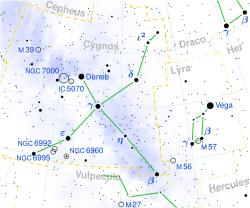
Here’s a tip for fostering spatial thinking in children: Get a compass and show them how to find the directions with it. Remember when you find North, you are actually finding the alignment of the earth’s rotational axis. The circle of the compass, with its notation of degrees, presents a wonderful exploration of measurement using circles. Measuring the stars’ and planets’ positions in the sky was one of the original activities of science thousands of years ago.
When skies are clear, October is a great stargazing month, as sunset gets earlier and earlier. The waning moon is now in our morning sky and can often be seen up near the zenith early in the day. As the day goes by, the moon is lower and to the west. It is just less than half full at the start of the month. Children are particularly amazed to see the moon in the daytime. The next full moon is Oct. 22. Our zenith sky constellations are Lyra and Cygnus, described in the September sky watch.
I had an interesting experience watching for Vega, the brightest star at our zenith, as it appeared right after dusk. I was on my back, looking straight up, without binoculars or telescope, expecting to see a slow glimmer and then the full brightness of Vega. It did not appear in this way though. It suddenly blinked on, as if a switch was pulled. This is one way to find this star, as it can be seen before other stars. It is the third brightest star in our sky after Sirius and Arcturus. Its estimated diameter is 2.8 million miles across, and it is 61 times brighter than our sun. It is 25.3 light years away.
Interestingly, the next bright star to appear in our zenith sky is Deneb, a part of the constellation Cygnus, a star that is much, much farther away. It appears east of Vega about 15-20 minutes later. Deneb is 3,262 light years away, and it has 301,059 times the luminosity of the sun. Now we know why they use the phrase astronomical numbers! Cygnus is also called the Northern Cross.
To the south of these two, there is another bright star up above, Altair, in the constellation of Aquila, the Eagle. Vega, Deneb and Altair make a triangle up above, which is called the Summer Triangle. These stars can be seen without a telescope or binoculars. Sometimes it helps to shield your eyes from streetlights to let them adjust to the darker sky straight up. Jupiter is still in the South sky at night.
See September for a description of the Big Dipper in the north as well as more resources. The Old Farmers’ Almanac has information for the 2 meteor showers in October. Happy Stargazing!
